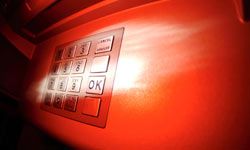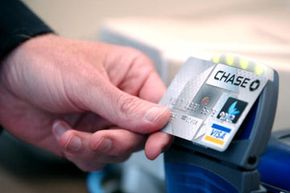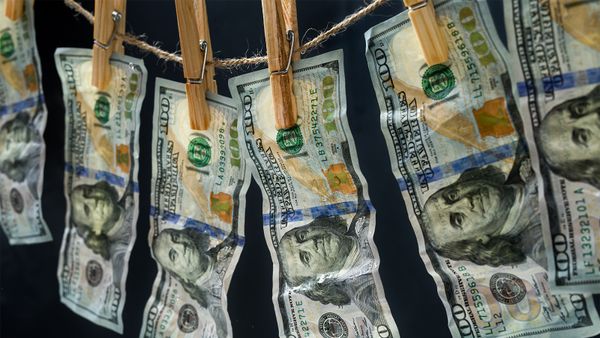In 2008, more than $1 billion was stolen in ATM-related crimes [source: ADT]. Sure, some thieves take the old-fashioned route and crack them right open, but there's a much quieter, high-tech form of theft targeting ATMs. It's called skimming.
ATM skimming is like identity theft for debit cards: Thieves use hidden electronics to steal the personal information stored on your card and record your PIN number to access all that hard-earned cash in your account. That's why skimming takes two separate components to work. The first part is the skimmer itself, a card reader placed over the ATM's real card slot [source: Krebs]. When you slide your card into the ATM, you're unwittingly sliding it through the counterfeit reader, which scans and stores all the information on the magnetic strip.
Advertisement
However, to gain full access to your bank account on an ATM, the thieves still need your PIN number. That's where cameras come in -- hidden on or near the ATMs, tiny spy cameras are positioned to get a clear view of the keypad and record all the ATM's PIN action [source: Walters]. Always pay attention to objects mounted on the ATM or located close by. A pinhole or off-color piece of plastic could give away the camera's hiding place. Cameras could even be hidden in brochure racks [source: Krebs].
Some ATM skimming schemes employ fake keypads in lieu of cameras to capture PIN numbers. Just like the card skimmers fit over the ATM's true card slot, skimming keypads are designed to mimic the keypad's design and fit over it like a glove. If you notice that the keypad on your ATM seems to protrude oddly from the surface around it, or if you spy an odd color change between the pad and the rest of the ATM, it could be a fake.
Unfortunately, there are even more ways for thieves to access your bank account via an ATM --and some of them don't even require skimming.
Advertisement



